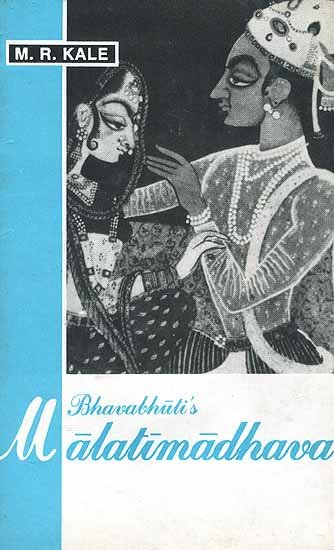Malatimadhava (study)
by Jintu Moni Dutta | 2017 | 52,468 words | ISBN-10: 8120813057 | ISBN-13: 9788120813052
This page relates ‘Gaudi Riti’ from the English study on the Malatimadhava of Bhavabhuti:—A Prakarana type of Drama in ten acts revolving around the love-story of Malati (from Padmāvatī) and Madhava (from Vidarbha). This study discusses the history of its author and the literary, social, religious, historical and cultural aspects of the Malatimadhava.
Part 3.3b - Gauḍī Rīti
The Gauḍī rīti is a strong mode of expression and consists of hard consonants with stiff-dipthongs. It is abundant with compounds which are very often unusually long.[1] It is verbose and full of alliterations. It is a very suitable vehicle of suggestion for the Raudra i.e furious sentiments and the Vīra i.e heroic sentiments.
In the Mālatīmādhava, Bhavabhūti has used the Gauḍī rīti according to the situation and has employed it with the same mastery as he has shown in the use of Vaidarbhī style. The verse vyāghrāghrātamṛgīkṛpā…… ……..[2] etc is a good example of Gauḍī style as herein the description of Aghoraghaṇṭa is portrayed by Bhavabhūti in an ornamental language with complicated and lengthy compounds consisting of harsh syllables. It is verbose and frequent repetition of syllables such as ghrā, ṇdha occur in it forming alliteration. This strong portrayal of Aghoraghṇṭa qualifies in it the Oja guṇa also. Hence this verse is a striking illustration of Bhavabhūti’s successful use of Gauḍī style. The heroic sentiment in the description of Aghoraghaṇṭa’s valour is expressed in the Gauḍī style.
Footnotes and references:
[1]:
ojaḥ prakāśakaivarṇairbandha āḍambaraḥ punaḥ /
samāsavahulā gauḍī /
Sāhityadarpaṇa, IX.3
